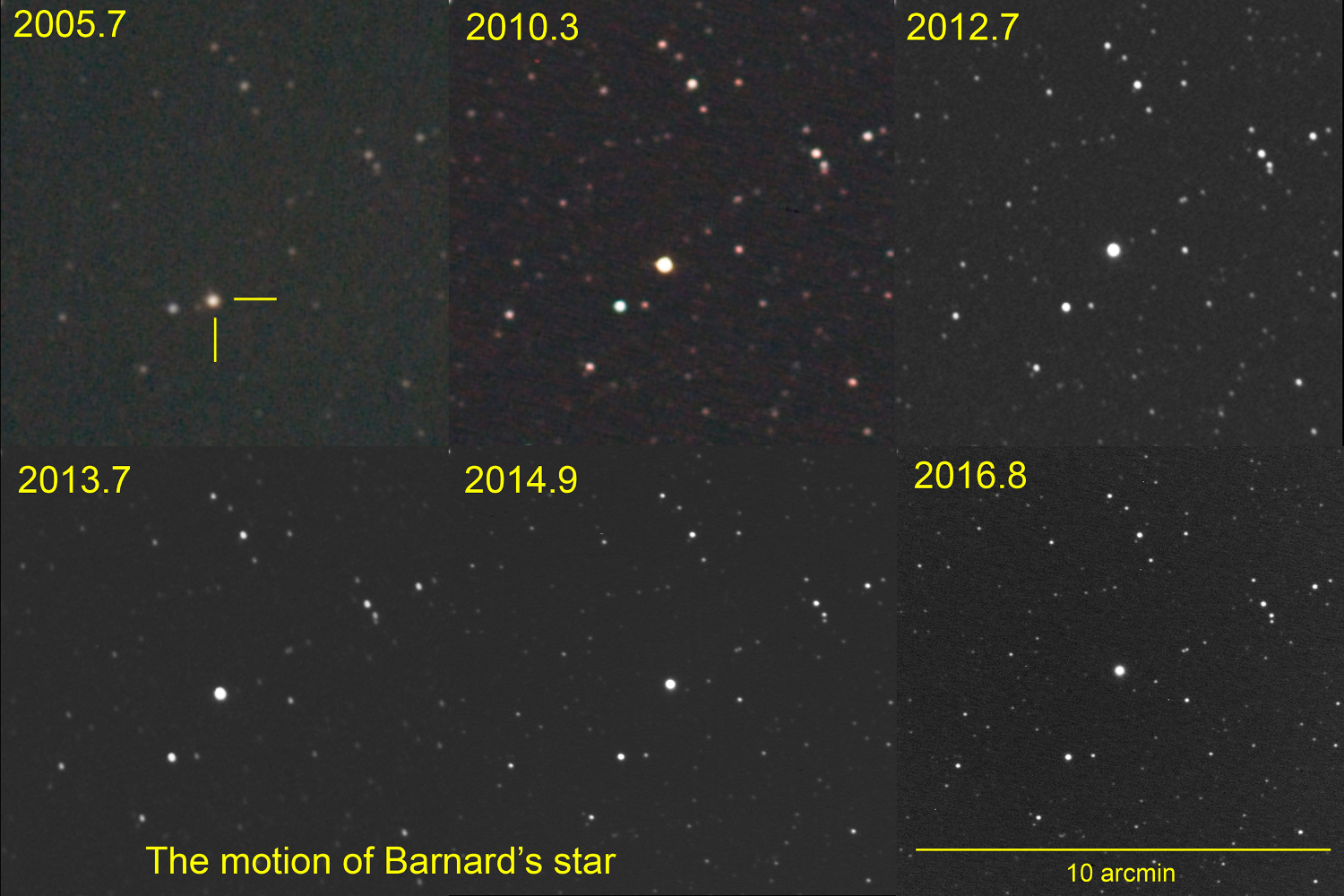
Orwell Astronomical Society (Ipswich)
Stellar Proper Motions, 13 September 2004 - 24 February 2019
Everything in the sky moves! Although the stars are distant, they too move at various rates, and their individual motions are called proper motions (PM).
The star with the highest PM is Barnard's Star (HIP 87937), named after the American astronomer E E Barnard (1857-1923) who, in 1916, measured its proper motion (PM) as 10.3 arcsec per year. The star is a red dwarf approximately six light years distant in the constellation Ophiuchus. It is the fourth-nearest star to the Sun, after the three components of the Alpha Centauri system. It has an apparent magnitude of +9.5 and is invisible to the naked eye; it is much brighter in the infrared than in visible light.
The motion of Barnard's star can readily be detected in amateur telescopes. (Its space velocity relative to the Sun is 143 km/s.) The image below shows the apparent motion of Barnard's Star from September 2005 to October 2016.
Barnard's star is not unique in its PM being visible to amateur equipment. On 04 February 2018, I recorded the position of four other stars with high PM, with a view to repeating the exercise at a later date. By good fortune, the weather was clear exactly one year later.
Below are comparison images for the four stars. Now it is difficult to see the difference between the two images for each star, so I created a third image by overlaying the two, inverting the top one and changing its transparency to 50%. If nothing changed in the year-long interval, the third image would be a uniform 50% grey. Any change (created by the PM of the star) is immediately apparent, and a magnified inset image shows the difference more clearly. The images of the high-PM stars are bloated by overexposure in order to capture fainter background stars. All images were taken with a Celestron EdgeHD 200 mm Schmidt-Cassegrain telescope with SBIG 8300 camera.
Luyten's Star (HIP36208) in Canis Minor. Magnitude 9.8 with a PM of 3.7 arcsec per year. In 2017 two planets were discovered in orbit.
Lalande 21185 (HIP54035) in Ursa Major. Magnitude 7.5 with a PM of 4.8 arcsec per year.
Gliese 412 (HIP54211) in Ursa Major. Magnitude 8.7 with a PM of 4.5 arcsec per year. It was not until I put this image together that I found that Gliese 412 is actually a double star with a magnitude 14.5 secondary.
Groombridge 1830 (HIP57939) in Ursa Major. Magnitude 6.4 with a PM of 7.1 arcsec per year. When discovered, this star had the highest PM of any known star, until superseded by Kapteyn's Star (in Pictor), then again by Barnard's Star. In this image, poor guiding has given the star a pear-shaped appearance: there is not a second unresolved companion!
Nigel Evans